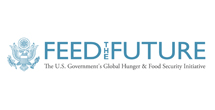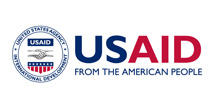Mortality of young livestock
Project title: Assessment of the magnitude and causes of young stock mortality in major production systems of Ethiopia
Lead researcher:Dr. Tsegaw Fentie, University of Gondar
Collaborators
- Dr. Wudu Temesgen, University of Gondar
- Dr. Achenef Melaku, University of Gondar
- Mr. Getachew Assefa, University of Gondar
- Dr. Shimelis Tesfaye, University of Gondar
- Dr. Feyissa Fufa, Jimma University
- Mr. Zemene Adane, Jimma University
- Dr. Ayalew Niguse, Jigjiga University
- Mr. Bosenu Alemu, Jigjiga University
- Dr. Fikre Zeru Wahild, Samara University
- Dr. Birhanu Hailu, Samara University
- Dr. Sentayehu Guta, National Animal Health Diagnostic and Investigation Center
- Dr. Gebreyes Mekonen, Bahir Dar Regional Veterinary Laboratory.
Download the research report ysm-fentie-et-al
Research summary
Livestock in Ethiopia has been recognized as one of the most important sectors in subsistence agriculture in the quest to attain human food security and good welfare. Though the country has the largest inventory of livestock in the continent, production is severely affected for various reasons. A single visit survey was undertaken in July and August 2015 with the purpose of determining the annual mortality during June 2014 to June 2015 and investigating the major causes of young stock mortality under different livestock production settings. The study was undertaken in herds from mixed crop-livestock (n = 747), pastoral (n = 452), and peri-urban and urban dairy (n = 332) production systems. One-year retrospective data were collected from livestock owners by interview using semi-structured questionnaires and direct observation of farm practices.
Participatory investigation techniques were applied to identify and prioritize causes of young stock mortality. In mixed crop-livestock production systems, mean annual mortality (birth-to-weaning) was reported in the range of 9.2–14% in calves, 14.9–33.5% in lambs, and 17.6–24% in kids. The pre-parturient loss in terms of abortion and stillbirth was 3.0–8.7% in cattle, 7.5–8% in lambs, and 9.3–14.4% in kids. The annual calf mortality in the urban and peri-urban dairy production system was reported in the range of 15.3–25%. The premature loss in terms of stillbirth was 6.2–14.4%. In the pastoral production system, the annual birth-to-weaning mortality of young stock was reported in the range of 26–29.2% in cattle, 32.5–35% in camel calves, and 35–36% in lambs and kids. The premature death (abortion and stillbirth) was 17.4–21.2% in cattle, 23.4–48.8% in camels, and 25–41% in small ruminants. Age-specific mortality across the production systems declined with increased age, and the highest mortality was recorded during the first month of life extending up to the third month of age. Regardless of the production system, disease and malnutrition were the most important causes of mortality in young stock.
Among the diseases, diarrhea and respiratory disorders were important causes of young stock mortality. Malpractices in young stock management were identified, including restricted colostrum and milk feeding, poor care and supplemental feeding, and poor health management. Livestock keepers appeared to be aware of the challenges of young stock, but seemed to have inadequate knowledge to deal with the challenges. Interventions in health and husbandry are recommended to control young stock mortality.


